24.5 x 29.5 in. (62 x 75 cm), on rice paper with extension where inserted in American Archives upper right. Folds as issued. Lower left W.J. Stone, SC Washn. By the early part of the 19th century, the original engrossed copy of the Declaration of Independence was showing signs of wear. Although we do not have any good descriptions of its condition, it had been rolled, and unrolled numerous times for visiting dignitaries, engravers (such as Benjamin Tyler, who made copies of many political letters and prints which were offered for sale), and others. Most Americans had never seen the important documents, and the generation of the Revolution was passing rapidly by the first quarter of the new century. Thus in 1820, William Stone was commissioned by then-Secretary of State, John Quincy Adams, to make an official facsimile of the Declaration of Independence. There is some indication that the replacement Declaration was to be just that - a replacement - so there seemed to be little concern for the original. It is not clear what happened to it during the three years that Stone had it in his shop. The "official story" is that Stone used a "wet" process to transfer some of the ink from the original document to the copper plate, which was then engraved as an identical copy. And it is often Stone's process that is blamed for the poor condition of the Declaration, however, the indications are that it was already in poor shape before Stone was commissioned to copy it. That view is now being questioned, as there really is no evidence of a wet plate process. We do not know how the original was copied - traced? free-hand? possibly a camera lucida (one had been patented a decade earlier)? If so, light was more likely the agent of damage than water or other fluid. Subsequently, probably in the mid-1840s, someone allowed an anastatic facsimile to be made of the original Declaration (rather than one of the copies). This process was brought from Europe and involved some potentially damaging chemicals. By 1846, copies of an "Anastatic Declaration" were being advertised for sale, interestingly, to sell the facsimile process. The founding document had become an advertising ploy! After three years of exacting work, William Stone had a copper plate worthy of the document. In the upper left it had Engraved by W.J. Stone for the Dept. of State by order and in the upper right of J.Q. Adams, Sec. of State July 4, 1823. On May 26, 1824 Congress ordered 200 copies (some sources say 201) of the Declaration of Independence printed on vellum and distributed to the three surviving signers (Thomas Jefferson John Adams Charles Carroll of Carrollton), President Monroe, Vice President Thompkins, former president Madison, General Lafayette; copies went to the House and Senate, government departments, Supreme Court, and Governors of states and territories, and the remainder were sent to colleges and universities as the President saw fit. The plate was then put in storage. At some point the top engraving was removed, and W.J. Stone SC WASHn. was placed in the lower left. Peter Force was an archivist and historian, who realized that most Americans, by the middle of the 19th century, had not seen or read the important historic documents of the nation. So he planned an “American Archives” series to highlight all of the important historical documents. The series was originally planned as more than 20 volumes, with subscriptions for 2500 copies. July 21st, 1833 William Stone invoiced Peter Force for 4,000 copies of the Declaration of Independence. In 1843 Force was commissioned to print the series, but the project was abruptly canceled by Secretary of State William Marcy. Force scaled back his plans to a smaller series and 500 subscriptions when Congress re-authorized the project. It is not clear Force received all copies invoiced by Stone. It is thought that he received about 1500 of them, which were folded into the American Archives, 5th Series book in 1848. Stone himse
24.5 x 29.5 in. (62 x 75 cm), on rice paper with extension where inserted in American Archives upper right. Folds as issued. Lower left W.J. Stone, SC Washn. By the early part of the 19th century, the original engrossed copy of the Declaration of Independence was showing signs of wear. Although we do not have any good descriptions of its condition, it had been rolled, and unrolled numerous times for visiting dignitaries, engravers (such as Benjamin Tyler, who made copies of many political letters and prints which were offered for sale), and others. Most Americans had never seen the important documents, and the generation of the Revolution was passing rapidly by the first quarter of the new century. Thus in 1820, William Stone was commissioned by then-Secretary of State, John Quincy Adams, to make an official facsimile of the Declaration of Independence. There is some indication that the replacement Declaration was to be just that - a replacement - so there seemed to be little concern for the original. It is not clear what happened to it during the three years that Stone had it in his shop. The "official story" is that Stone used a "wet" process to transfer some of the ink from the original document to the copper plate, which was then engraved as an identical copy. And it is often Stone's process that is blamed for the poor condition of the Declaration, however, the indications are that it was already in poor shape before Stone was commissioned to copy it. That view is now being questioned, as there really is no evidence of a wet plate process. We do not know how the original was copied - traced? free-hand? possibly a camera lucida (one had been patented a decade earlier)? If so, light was more likely the agent of damage than water or other fluid. Subsequently, probably in the mid-1840s, someone allowed an anastatic facsimile to be made of the original Declaration (rather than one of the copies). This process was brought from Europe and involved some potentially damaging chemicals. By 1846, copies of an "Anastatic Declaration" were being advertised for sale, interestingly, to sell the facsimile process. The founding document had become an advertising ploy! After three years of exacting work, William Stone had a copper plate worthy of the document. In the upper left it had Engraved by W.J. Stone for the Dept. of State by order and in the upper right of J.Q. Adams, Sec. of State July 4, 1823. On May 26, 1824 Congress ordered 200 copies (some sources say 201) of the Declaration of Independence printed on vellum and distributed to the three surviving signers (Thomas Jefferson John Adams Charles Carroll of Carrollton), President Monroe, Vice President Thompkins, former president Madison, General Lafayette; copies went to the House and Senate, government departments, Supreme Court, and Governors of states and territories, and the remainder were sent to colleges and universities as the President saw fit. The plate was then put in storage. At some point the top engraving was removed, and W.J. Stone SC WASHn. was placed in the lower left. Peter Force was an archivist and historian, who realized that most Americans, by the middle of the 19th century, had not seen or read the important historic documents of the nation. So he planned an “American Archives” series to highlight all of the important historical documents. The series was originally planned as more than 20 volumes, with subscriptions for 2500 copies. July 21st, 1833 William Stone invoiced Peter Force for 4,000 copies of the Declaration of Independence. In 1843 Force was commissioned to print the series, but the project was abruptly canceled by Secretary of State William Marcy. Force scaled back his plans to a smaller series and 500 subscriptions when Congress re-authorized the project. It is not clear Force received all copies invoiced by Stone. It is thought that he received about 1500 of them, which were folded into the American Archives, 5th Series book in 1848. Stone himse
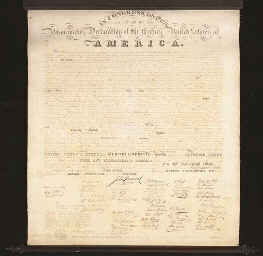
.jpg)
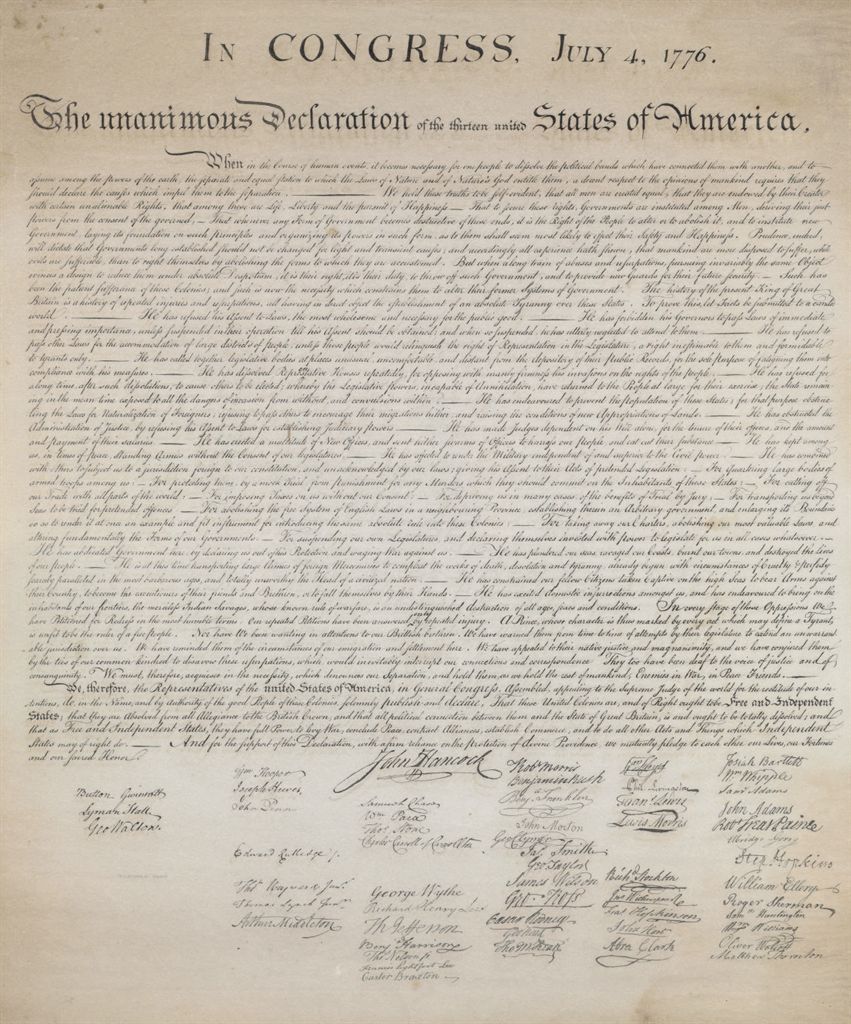


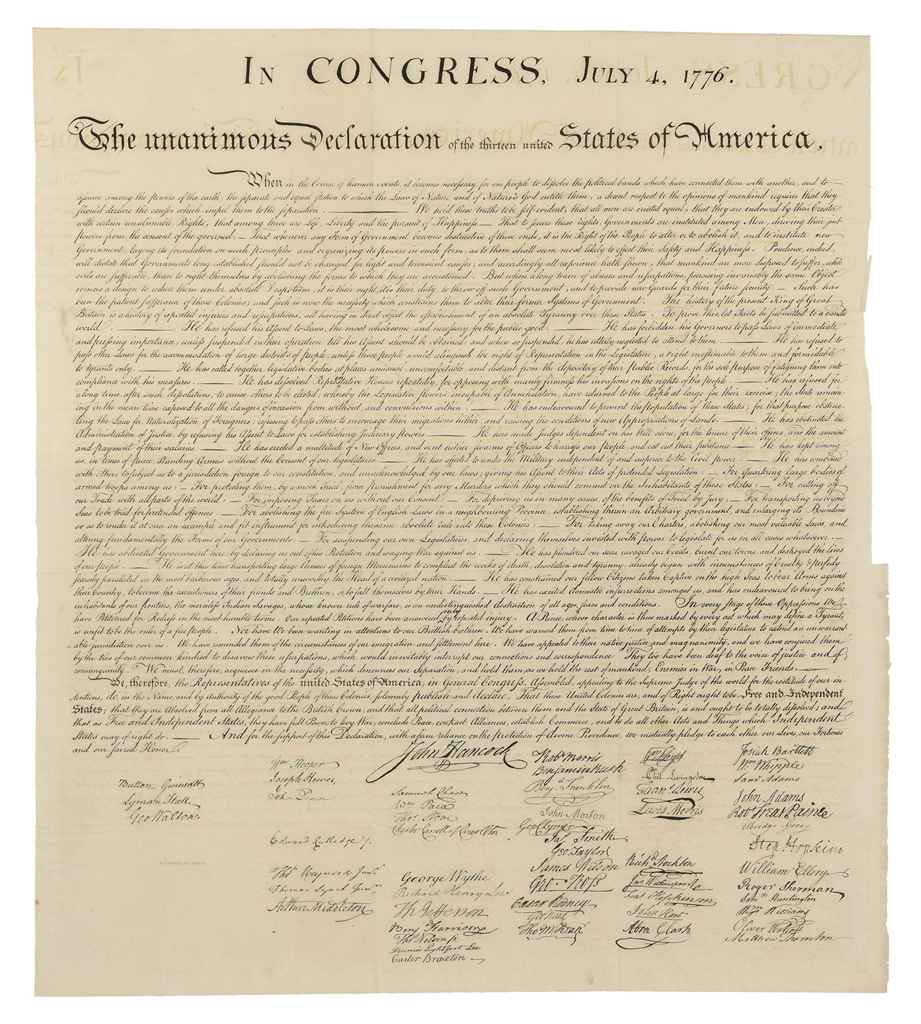
.jpg)
.jpg)
.jpg)


.jpg)
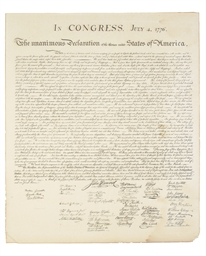

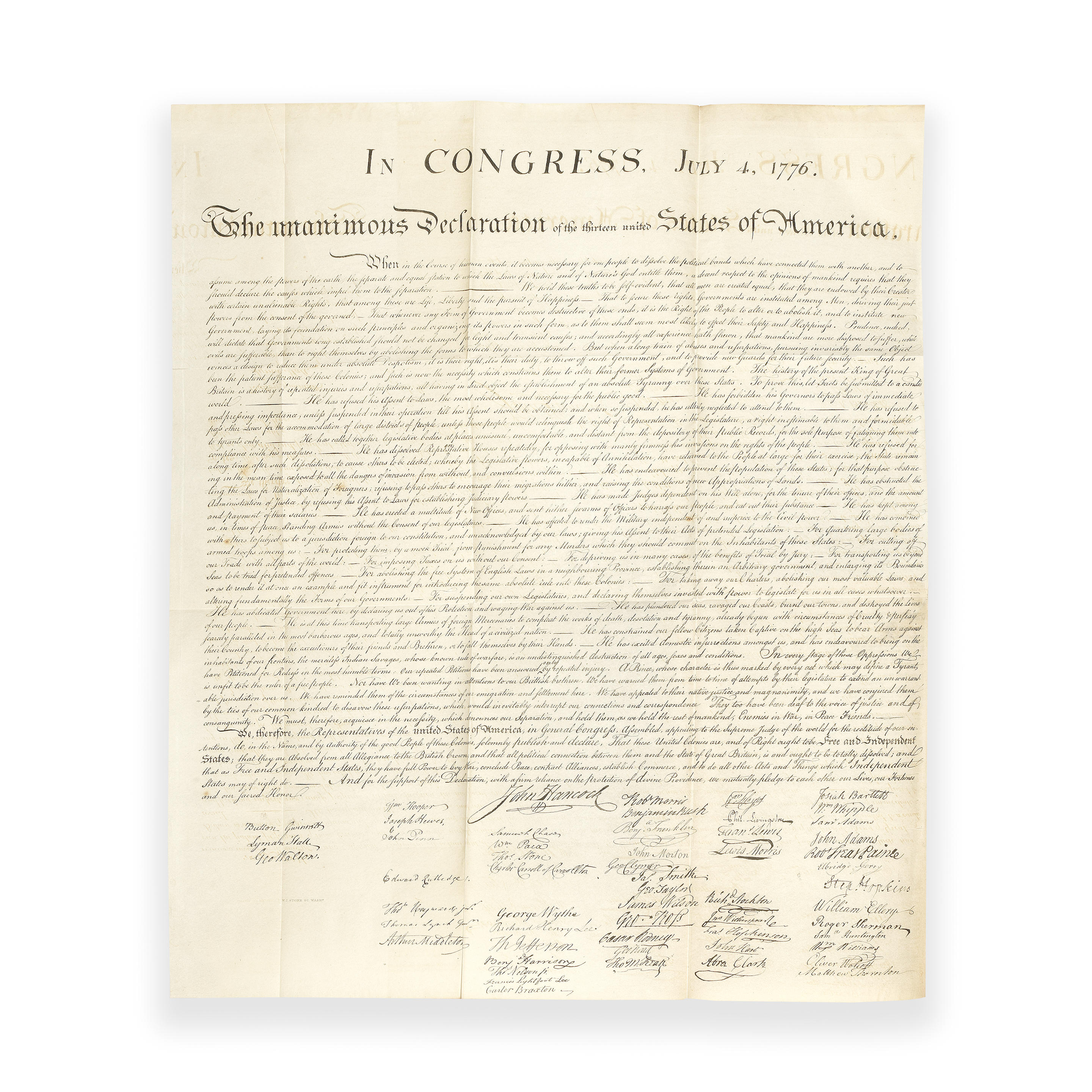
Try LotSearch and its premium features for 7 days - without any costs!
Be notified automatically about new items in upcoming auctions.
Create an alert